[bannerTop]
Welcome, reader, to our Amisites “Virus”removal guide. This browser hijacker appears to be associated with the aMuleC Adware.
Lately, there has been an increased amount of complaints concerning an unwanted program called Amisites. Many users have stated that the unwanted software has gotten onto their PC without their consent and has integrated itself into their Chrome, IE or Mozilla Firefox browsers, sometimes changing the default search engine and homepage. If you too have problems with this program, you should know that there’s probably no reason for panic. Amisites is nothing more than another annoying Browser Hijacker. Software of this type, while not inherently dangerous, can be quite a pain in the neck. To an extent, browser hijackers are simililar to Adware, such as aMuleC and others.That is why, we have written the following article. It will help you get a better grasp of what Browser Hijackers do, once installed onto your PC and how you can prevent them from getting inside your system ever again. Additionally, beneath the main part of the article, there is a guide that will show you how you can uninstall and remove the unwanted software from your computer. Just remember to read everything before the actual guide, because the info provided here is essential for protecting your machine from these irritating programs.

Amisites is not a Virus, but actually a Browser Hijacker!
It is not uncommon that a Browser Hijacker is marketed as being some kind of useful program that can benefit your online experience and enhance your computer’s protection and productivity. Such claims are for the most part exaggerated, to say the least. Most of the time when you see a Browser Hijacker promoted as having some sort of usefulness, this is made simply to trick you into installing the program. The truth is that software such as Amisites is almost always entirely aimed at benefiting its creators. These programs are usually used in the online marketing industry and they can employ a variety of different methods and techniques that allows them to generate considerable amounts of income for their developers, while having little to no real use for regular users.
Can Hijackers be harmful to your computer?
There is that common misconception that software of the Browser Hijacker type is inherently dangerous and harmful. This is almost always wrong. The majority of these programs is legal and not capable of harming your PC in any way. Actual viruses like Ransomware and Trojans are what you should be concerned about. If it is only Amisites that you have, then there’s no need to worry. However, it should be noted that even though Amisites is not some sort of a noxious Ransomware virus, it is still an unwanted program. Apart from what we have already mentioned, here are a couple more reasons why it is a good idea to remove the program from your PC, as soon as you notice its presence:
- Some Hijackers can look through your browsing history and later sell the data for profit or use it to display intrusive ads in your browser. This is a privacy invasion and even though the unwanted software usually does not have access to any important data, it is still something you should be aware of.
- Amisites could display false/exaggerated error messages in order to persuade you into buying some sort of PC optimization tool. Should you notice any such error reports that seem over the top and are not coming from your Windows OS, disregard them – this is just another clever trick used to promote PC software.
- Your computer’s performance might be affected by the unwanted program. In some cases, Hijackers might cause your computer to run slower or even experience freezes/crashes. Those will go away as soon as the unwanted software is removed.
Keeping the Hijackers out of your system
After you remove the intrusive program from your computer, you’ll need to ensure that no more unwanted software gets installed on it. To do that, you need to have a good understanding of the methods that Browser Hijacker developers use in order to spread their products throughout the internet. Here is a short list of the most commonly employed techniques used for Hijacker distribution:
- Junk mail and hyperlinks – Spam messages are one of the most popular and widely used schemes when it comes to spreading all sorts of unwanted programs. Amisites is no exception. Therefore, from now on be very careful with the e-mails and hyperlinks you open. If the sender is unknown or the link/e-mail looks suspicious, you’d better not open it at all.
- Torrents/ downloadable files – File-sharing sites are a perfect place for spreading all sorts of software. That is why you should only use download sources that are reliable and trustworthy. Do not use any illegal or shady-looking websites.
- Program-bundles – This is considered to be the most effective method for Hijacker distribution. With this method, the unwanted software is put inside the installer of some other program. If the user installs that other program using the Quick installation settings, the Hijacker will be installed as well. That is why you should always opt for the custom setup option, where you can see all added content and leave out of the installation anything that appears to be a potential Hijacker.
Amisites “Virus” Removal
I – Uninstallation
[bannerMiddle]
- Use the Winkey+R keyboard combination, write Control Panel in the search field and hit enter.

- Go to Uninstall a program under Programs.

- Seek the unwanted software, select it and then click on Uninstall
- If you are unable to spot Amisites, search for any unrecognized programs that you do not remember installing on your PC – the unwanted software might disguise itself by going under a different name.
II – Safe mode and revealing hidden files
III – Cleaning all your browsers
- Go to your browser’s icon, right-click on it and select Properties.

- Go to the Shortcut tab and in the Target make sure to delete anything written after “.exe”.

- Now, open your browser and follow the instructions below depending on whether you are using Chrome, Mozilla or IE.
- Chrome users:
- Go to your browser’s main menu located in the top-right corner of the screen and select Settings.
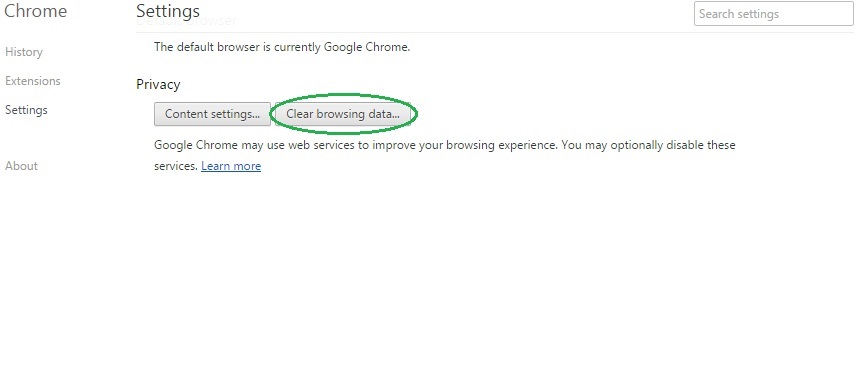
- Scroll down, click on Show Advanced Settings and then select Clear browsing data. Just to be sure, tick everything and clear the data.
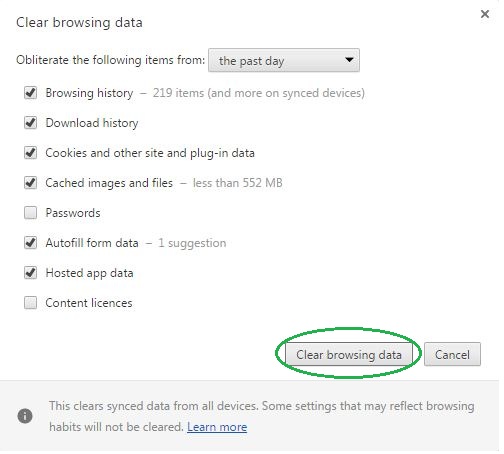
- Now, in the left pane, go to Extensions and look through all extensions that are integrated within your browser. If you notice any suspicious add-on, disable it and then remove it.
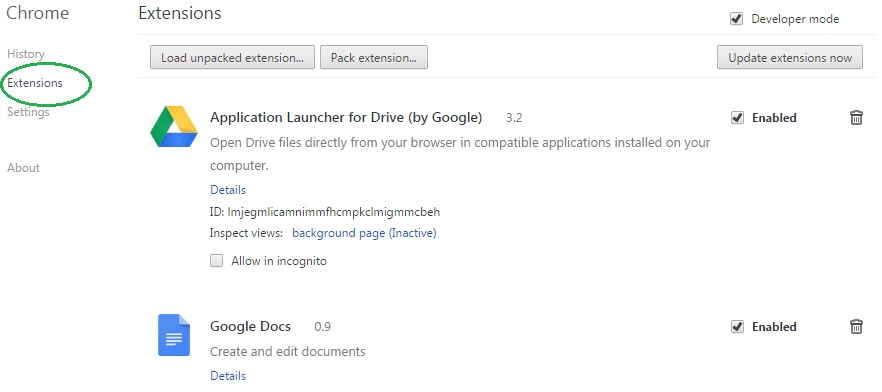
- Firefox users:
- Similarly to Chrome, go to the main menu and select Add-ons and then Extensions.
- Remove any suspicious browser extensions that you may have even if they do not have the name Amisites on them.
- IE users:
- Go to Tools and select Manage add-ons.

- Click on all add-on types from the left pane and check if there is anything suspicious in the right panel. In case you find anything shade, make sure to remove it.
[bannerMiddleSecond]
IV – Removing Shady processes
- Go to your start menu, type Task Manager in the search field and from the results open View running processes with Task Manager.

- Thoroughly look through all processes. The name Amisites might not be there, but if you notice any shady looking process that consumes high amounts of memory it might be ran by the unwanted program.
- If you spot the process ran by Amisites, right-click on it, open its file location and delete everything in there. Then go back to the Task Manager and end the process.

V – DNS check
- In the start menu search box write View Network Connections and open the first result.
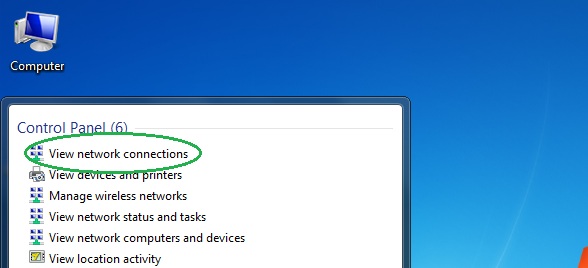
- Right-click on the network connection you are using and go to Properties.

- Select Internet Protocol Version (TCP/IPv4) and click on Properties.

- If Obtain DNS server addresses automatically is not checked, check it.
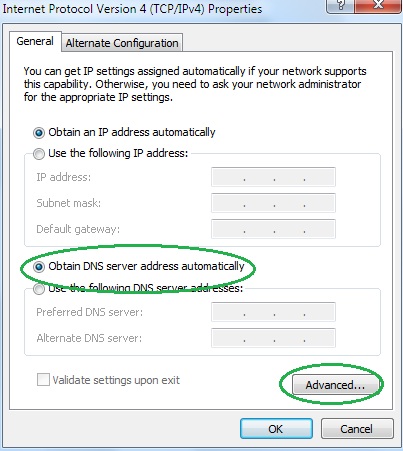
- Go to Advanced and select the DNS If there is anything in the DNS server addresses field, remove it and click OK.

- Click OK on the rest of the opened windows.